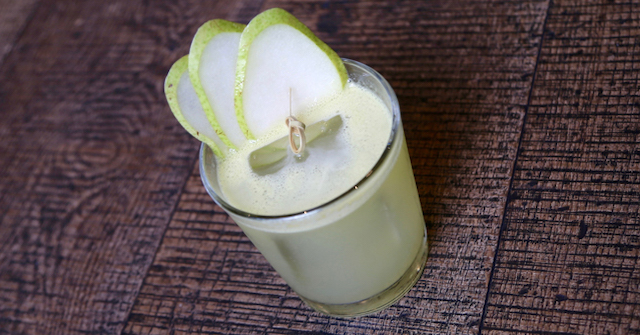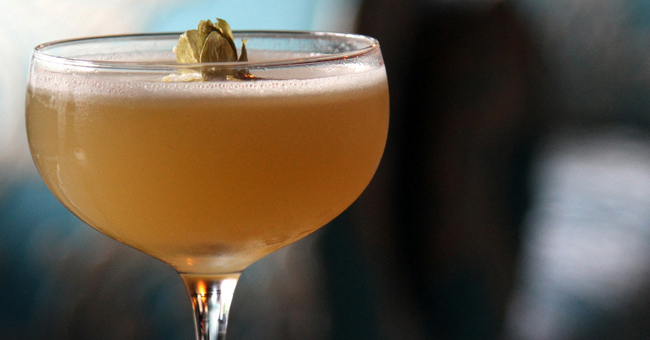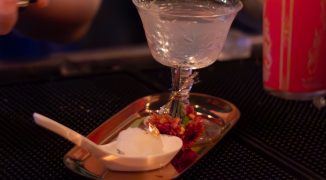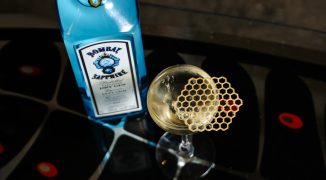The gap between the beer and cocktail worlds is shrinking: bartenders are taking a hint from their beer-brewing comrades and incorporating hops into cocktails. Mixologists are now turning to the common brewing ingredient to add floral, tropical, citric and (of course) bitter notes to their builds.
“The brewer and the mixologist are very similar,” says Elayne Duff, current Global Events Manager for Anheuser-Busch InBev and former Head Mixologist and National Ambassador for Diageo. “Brewers are innovative. They’re really creative and constantly looking for the next thing, the next flavor, what’s hot. Mixologists are the same. They’re extremely passionate, very dedicated to their craft—like brewers—and constantly trying to find innovative ways to improve what they’re doing while keeping their heads to the ground to hear what their customers are drinking.”
Right now, that’s more bitter drinks, Duff explains, as the rise in craft beer and new wave of IPAs means not only an affinity for palate-crushing sips, but also an increased availability of fresh, local hops.
There are three common ways of using hops in a cocktail. The most basic of which, and the best starting point for those looking to introduce hops to a program, is via syrups, Duff says. She recommends a simple honey and hops syrup in an Old Fashioned. Bartenders are also experimenting with tinctures and infusions. The latter is a delicate process of finding the right amount of hops to soak in the spirit for the precise amount of time.
Feisser Stone at Hinoki & the Bird in Los Angeles learned the hard way what happens when hops are left to their own devices. He first experimented with hops while researching fermentation methods two years ago, by soaking a cup of Cascade hops in gin. The final product was overwhelmingly bitter. “It takes a lot of trial and error to acquire the perfect amount of bitterness that you are looking to get,” he says. For his second attempt, he turned to white oak Akashi whiskey infused with two ounces of hops for 24-hours. The infusion stars in Pear With Me (pictured below), which also uses pear, Manzanilla sherry, ginger and lemon to create an herbal and bitter cocktail with a long, dry finish.
 Bordel’s Pear With Me combines hop-infused whiskey with Manzanilla sherry, ginger, lemon and pear.
Bordel’s Pear With Me combines hop-infused whiskey with Manzanilla sherry, ginger, lemon and pear.
While bitterness is the most obvious application for hops, careful experimentation can extract more delicate flavors. At Cassia in Santa Monica, Bar Manager Kenny Arbuckle uses hops to add both bitter and citrus notes to his play on the Negroni. He infuses Cocchi Americano with Citra hops to give it extra bite and brightness. That is combined with Cimarron, a peppery blanco tequila, and Punt e Mes. The cocktail is served in a glass rinsed with oyster shell-infused mezcal and garnished with a salmon roe-covered cucumber slice, earning it the name Hop Sea Negroni. “The only misstep to keep in mind while working with [hops] is to not let their flavor take over,” Arbuckle advises. “Just as an IPA needs balance between the hops and the malt, the use of hops in the cocktail must be balanced with the other ingredients.”
In Chicago, Bordel’s Antek the Owner cocktail gets a double dose of hops via Cascade hop-infused Jameson Cask Mate whiskey and stout beer. The cocktail, a take on a flip, is designed to taste like “more complex beer,” according to Beverage Director Brian Sturgulewski. The infused whiskey adds a hint of bitterness that cuts through the richness of Compass Box Pete Monster and crème de cacao, which is topped with stout and freshly grated nutmeg. This is the second time he has used hops in a cocktail. The first, dubbed the Pot Brownie Old Fashioned, relied on the ingredient’s earthier notes to mimic cannabis. “I don’t think there’s anything like it that can give you that element in a cocktail,” he says.




